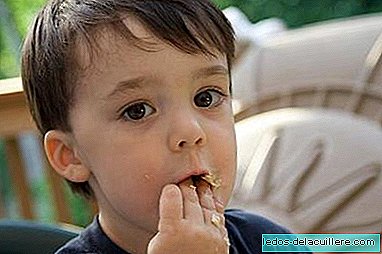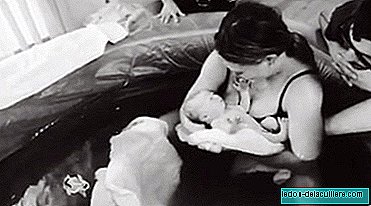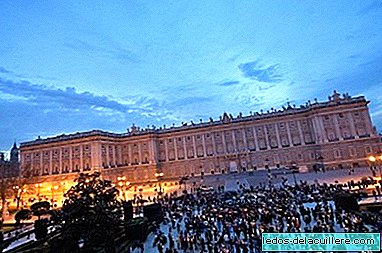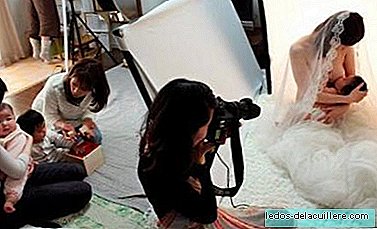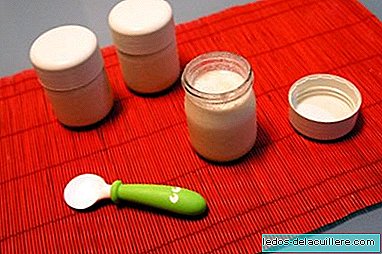
It's been a while since baby yogurts They are available in the market and, the truth is that their success is relatively high for how little they are necessary for babies.
In addition to being little necessary because children already usually drink enough milk, they are not too recommended in comparison, precisely, with breast milk or even in comparison with artificial milk. We have talked about this on other occasions, recommending other alternatives, basically thinking about offering the best to babies and also thinking about the parents' pocket, since they are not cheap at all.
Well, because of a question in our Answers section, in which we were asked about a possible recipe for making yogurts with artificial milk at home, I decided to find a way to make baby yogurts with artificial milk that are healthier than those that can be bought in stores.
On whether they are cheaper or not, I would say no, because between milk, cereals and yogurt it is possible that we spend more or less the same (I have not calculated it either, but I get the impression that the expense has to be Similary.
How to make yogurts with artificial milk
Well, let's go to the mess. I do not list the ingredients because there is not much mystery either. I am explaining step by step how to do everything and so you see what is needed.
To start we need 500 ml of water to make the mixture with the milk powder. The amount of water is not entirely decisive (I say it because it does not match the number of milk pots), because we are going to put 20 little pots of artificial milk, when for 510 ml of water we would need 17 little pots if we were going to prepare milk to give it To a baby.

Well, we take 500 ml of bottled water in a casserole and heat it until it reaches the boiling point. At that time we remove it from the heat (or vitro) and leave it for about 5 minutes to begin to lower the temperature. Remember that to reduce the risk of infections or problems by artificial milk it is advisable to reconstitute the powder at 70 ° C.

To the 500 ml of water we add 20 starter milk pots. The baby yogurts that they sell in the market are made with continuation milk, but as I have said that I want them to be healthier, because I have made them with starter milk (and therefore, probably, the expense is similar), which It has less protein and therefore resembles more breast milk than continuation milk.
Then, after giving the mix a few turns, we add 8 cereal cups. I have used gluten-free cereals (corn and rice), because they are the ones I had on hand, but you can use cereals with gluten (look for those that have no added sugar). The reason for putting cereals is that they simply flavor yogurt and a little more density. I have not tried to make yogurt without cereals, but surely they will come out the same and with a taste closer to that of natural yogurt (which does not have to displease them either).

Next it is time to add an ingredient that promotes fermentation, in this case a yogurt. In the first tests I did, I used normal plain yogurt, but of course, if it is recommended not to give dairy products without modifying the children until at least 12 months, it did not make much sense to make yogurts with artificial milk for children under 12 months if I then put a normal yogurt.
So I modified the recipe by changing the natural yogurt for a natural baby yogurt, of those who carry continuation milk and sugar (although it says it is natural).
So to the mixture we have of water, artificial starter milk and cereals, we add a baby yogurt. If we want to save a little, it is very possible that with half yogurt we get the same as with one, especially if we leave it some more time in the yogurt maker.
Once we have the yogurt inside the ideal is to stir it well so that all the ingredients are more or less liquid, so I have opted for use the blender because by hand I didn't quite manage to mix everything well.

To finish, the mixture has to heat up for a few hours for the yogurt to ferment and the milk powder to set.
Is the yogurt maker necessary?
I did several tests without yogurt maker, trying to apply heat leaving the mixture overnight covered with a tablecloth, leaving it overnight in the microwave (off), leaving it inside the microwave inside a bowl with hot water and finally leaving the mixture all Night at the water bath, with the minimum possible heat offered by my ceramic hob, without satisfactory results.
Finally I tried a yogurt maker and, after 12 hours of waiting and after leaving them in the fridge to cool, I got some baby yogurts that were really worth it. I have eaten about 14 or 15 for all the tests I have been doing and, the truth is that I like them.
If instead of putting a whole yogurt as an ingredient we put half, I would recommend leave the yogurt maker on for about 16 hours.
What children are recommended?
Taking into account that they are made with starter milk, with cereals and with a baby yogurt, they can be offered to children from 6 months who already drink artificial milk. Since they already drink artificial milk, which is modified cow's milk, we know for sure that they do not have an allergy or intolerance (until proven otherwise) so if we want to give a little variety, then one of these yogurts can be given.
Babies who drink breast milk and have not tried artificial milk would not be given it because Cow's milk is the first cause of allergy in childhood and therefore it is better to offer dairy products derived from cow's milk from 12 months, when they are less likely to develop it. In addition, I would not give them to them either because by comparing a breast milk intake with an artificial milk yogurt, breast milk intake nutritionally surpasses yogurt and to give it a lower quality dairy, since we give it a better milk.
And between artificial milk and yogurt, which is better?
If a child is between 6 and 12 months and a mother asks me what to give, if a yogurt of these or a bottle, then I would say it does not matter. A starter bottle of milk is probably healthier than one of these yogurts, but if you are giving continuation milk, then a bottle is a little more or less the same as a yogurt made from starter milk, cereals and a baby yogurt (although if we get purists, maybe better the bottle, which does not carry a baby yogurt).
And we don't add sugar?
We could have added sugar to the mix so that the yogurts were richer, as the baby yogurt makers do, but no, I did not want to use it because cereals already give a pleasant taste and because the baby yogurt used already carries some sugar.
Summarizing
The recipe is very basic and does not have too much complication, because the work is mainly done by the yogurt maker, applying heat to the mixture so that it is fermented.
If you want to save a little so that the thing comes out a little cheaper, continuation milk can be used instead of starter milk. In this way we will get yogurt equally healthier than those sold in stores, although not as much as the others (and will not be harmful, for the record, because most of the recipe comes from something that the child already takes).
I am not one of those who would give yogurt to their children (if they drank artificial milk), although if I decided to do so, I would give them these preparations at home before they bought them. Manias that has one, I guess.
Photos | Armando Bastida
In Babies and more | My first yogurt is a little recommended food, Baby yogurts are still not recommended, My first Danone versus ABC of Central Lechera Asturiana


